Alexandra Waller
Human Intestinal Worms: Symptoms and Prevention
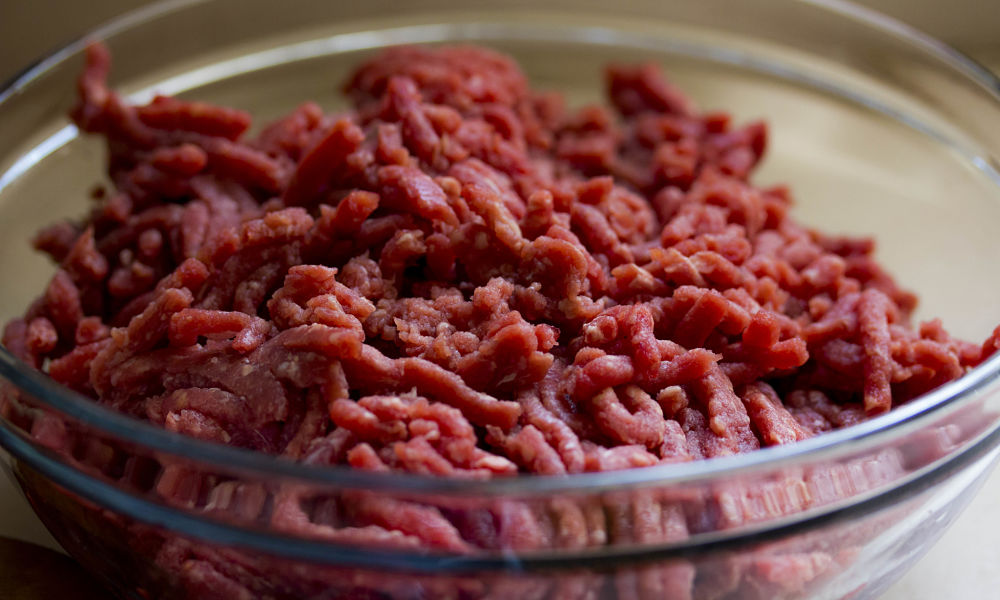
There are different types of human intestinal worms, and each may have different impacts or symptoms. However, they can be treated and prevented in a similar way. If you are interested in learning more about intestinal worms and how to prevent them, continue reading below.
What are human intestinal worms?
Intestinal worms are also known as helminths, which is the medical term for the worms. Human intestinal worms are parasites that thrive in the intestine, hence its term. They live by eating bowel content and can suck blood from the intestinal wall. The parasites may be dangerous because they can cause severe infections. Below is a list of the most common different kinds of human intestinal worms.
Common Human Intestinal Worms
Roundworms
- Hookworms: Necator americnaus and Anclostoma duodenale are two types of hookworms. As a type of roundworm, a hookworm is usually a half of an inch long and tends to be found in the tropics. It is most likely to get hookworms by walking barefoot. They penetrate the skin and reach the intestine. These hookworms live off of sucking blood from the intestinal wall.
- Whipworm: Also known as Trichuris trichiura, whipworm is another type of roundworm. It causes trichuriasis. Trichinella spiralis is another type of worm that causes trichinosis, and is most likely to be acquired by eating raw or undercooked meat. More specifically, eating uncooked and contaminated pork meat will increase your chances for infection.
Flukes
- Schistosoma mansoniis a type of parasite that causes intestinal schistosomiasis. Mainly found in Africa, the Caribbean, Middle East, and South America, the parasite tends to reach about a half an inch and is one millimeter thick. Be sure to check your stool and urine because there may be signs of their eggs.
Tapeworms
- Beef tapeworm: Adult tapeworms can reach up to twenty meters long. They are most likely to be acquired by eating undercooked and contaminated beef.
- Fish tapeworm: Infected freshwater fish are usually the cause for acquiring the worm. Usually found in Europe, Russia, and the United States, the tapeworm can be at least ten meters long.
What are the symptoms?
So, what are the signs and symptoms of human intestinal worms? Sometimes it is difficult to determine what is going on in your body because parasites can live inside your intestine without causing symptoms. However, when they do cause symptoms, they tend to look the following:
- Diarrhea, gas, or bloating
- Nausea or vomiting
- Abdominal pain
- Stomach pain
- Tiredness
- Weight loss
- Dysentery or passing a worm in your stool
Causes and Prevention
Make sure to contact your doctor if you are experiencing the symptoms listed above and believe you have an intestinal worm. If you are still uncertain or unsure about the information provided on the topic of human intestinal worms, here are some causes.
Causes
What causes human intestinal worms? The following things increase your chances for getting intestinal parasites:
- Poor hygiene
- Eating undercooked, contaminated meat
- Staying in an area with parasites
- International travel
- Drinking contaminated water
- Children and the elderly are more likely to receive an infection
- Weakened immune system
- HIV/AIDS
Prevention
In order to prevent getting intestinal worms, try following the suggestions listed below:
- Make sure to cook meat and fish completely. Undercooked meat tends to lead to intestinal worms and infection.
- Educate yourself with the places you travel to or restaurants you go to. International travel is a common cause of human intestinal worms, so make sure to be prepared if you plan on traveling. Avoid restaurants that have poor hygiene and be aware of what you are consuming.
- Do not be barefoot in tropical areas. Avoid walking barefoot or swimming in lakes in tropical areas. Parasites can penetrate the skin, which is why you need to make sure to wear shoes.
- Maintain a good hygiene by washing your hands regularly. Make sure to wash your hands specifically after you go to the bathroom, touch soil or pets, and before you eat.
- Keep a careful watch on your children and the elderly. Tell them to not touch their mouth or nose with their hands.
Human Intestinal Worms Treated
You can get treatment of intestinal worms, which is why it is important that you contact your doctor. Discuss your symptoms and concerns with a trusted professional or doctor in order to determine exactly what is going on with your body. A single dose of anti-worm drug should kill the parasite. However, if you leave the infection untreated, it can lead to more serious and severe symptoms.
Symptoms of Worms in Humans

How do you know if you have parasites or worms? Here is a list of a few symptoms of worms in humans.
There are different kinds of worms that can cause infection. Usually, flatworms and roundworms cause parasitic infection. However, there are a variety of different types of worms and parasites. In order to address your symptoms, make sure to first understand the variety of specific worms and parasites. Tapeworm, flukes, hookworms, pinworms, and trichinosis worms are five specific worms that may be causing your symptoms. Below we will examine the types of worms and symptoms caused by parasitic infections.
Types of Worms
Listed below are some worms that commonly cause infection, such as the tapeworm, flukes, hookworms, pinworms, and trichinosis worms.
Tapeworm
A tapeworm has the appearance similar to a long, white ribbon. Also, they can reach up to 50 feet long and can live in a human for 30 years. Avoid drinking contaminated water or eating raw and uncooked meat.
Flukes
This type of flatworm reaches to about a few inches in length. There are several kinds of flukes, and humans are less likely to become infected than animals. They live in the blood, intestines, or tissues and tend to come from contaminated water.
Hookworms
The name “hookworms” is attributed to the fact that they “hook” themselves to the intestinal wall inside the small intestine. Hookworms are usually less than half an inch long and are more likely to be transmitted through feces. This kind of roundworm is also possibly transmitted by infected soil that contains hookworm larvae that can penetrate the skin.
Pinworms
Also known as threadworms, pinworms are more common in children. Pinworms are usually harmless and live in the colon and rectum. Humans get infected by touching and swallowing the eggs. Because the eggs are so tiny, they can be inhaled without you knowing.
Trichinosis Worms
These roundworms are passed among animals. Avoid eating raw or undercooked meat that is infected by the larvae of the trichinosis worms. If you consume raw meat that is infected, you increase your chances of getting trichinosis worms. The larvae mature in your intestines and then reproduce and travel into the muscle and tissue.
Symptoms
How do you know if you have worms? Listed below are a few signs that you may have a parasite. In order to answer your questions and concerns, make sure to contact a professional or your trusted doctor. Parasites are considered as organisms that live and feed off of organisms, which is why it is important to examine your symptoms. If you believe your symptoms are similar to the signs of an infection listed below, then be sure to talk to a doctor.
Trouble Sleeping
Have you been experiencing sleepless nights? Are you having trouble sleeping or even find yourself wetting the bed? You may be showing signs of infection. If you have trouble falling asleep or wake up several times in the middle of the night, it is possible that you have worms. Also, another subtle sign that you have parasites includes grinding your teeth while you sleep.
Exhaustion and Depression
The lack of sleep also leads to feelings of exhaustion. Experiencing fatigue, exhaustion, or depression are signs of an infection. Additionally, a feeling of apathy is another symptom of worms in humans. Notice if you have any irritability or behavioral changes and make sure it is not caused by a parasite infection.
Lack of Appetite
A sudden lack of appetite is another sign of a parasite infection. On the other hand, never feeling satisfied or full after a meal is an additional sign or symptom.
Are you having trouble with diarrhea or digestion? It is possible that you are showing signs of an infection. Unexplained diarrhea, constipation, gas, or symptoms of IBS can be your body trying to tell you something. Be careful when you travel internationally and notice if you get traveler’s diarrhea when you are abroad.
Other Tips and Information
There are other symptoms of a parasite infection, such as experiencing pain in your muscles or joints, an itchy bottom, or redness around the vagina for women. Parasites are generally entered into the human body through contaminated food and water. In order to more successfully avoid getting an infection, stay away from contaminated food and water. Be aware of what you consume and put into your body, especially during your travels.
If you are still uncertain, there are ways to test for parasites. Stool tests can help identify what is going on inside your body. However, it is still highly recommended to contact your doctor in order to receive the best diagnosis and treatment.
How to Read Tarot Cards for Beginners
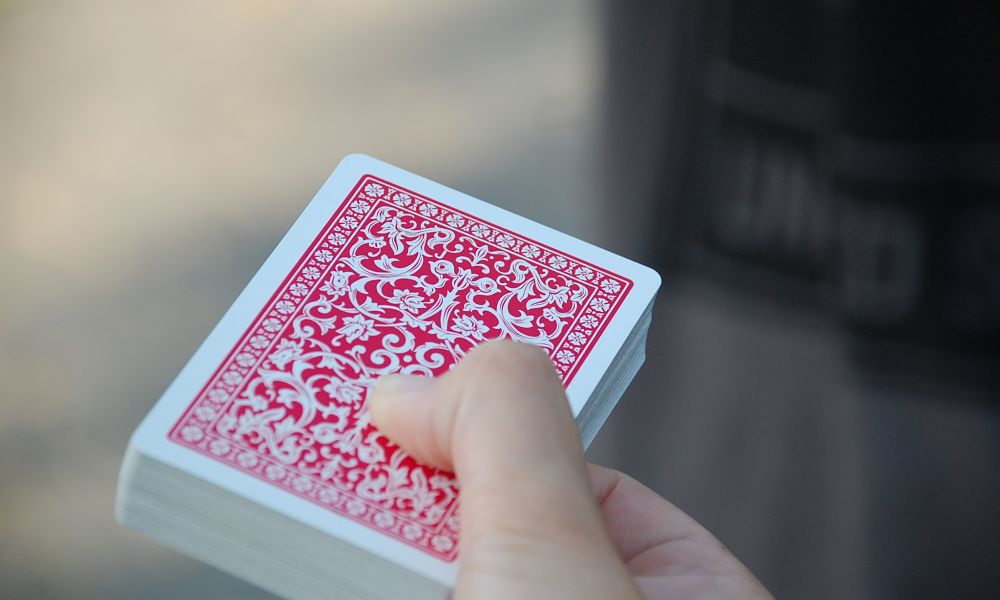
Does the mystery of the future or past intrigue you? Are you interested in reading tarot cards? Here are some steps and information about how to read tarot cards for beginners.
In order to conquer the art of tarot card reading, first familiarize yourself with the different symbols found on each tarot card. There is not a universal right way of reading tarot cards because each individual develops his or her own technique. However, everyone starts by learning the basics of tarot card reading. Whether you are experienced in or are unfamiliar with tarot card reading, here are some steps to help you in your journey.
Step 1: Choose Your Deck
Find a deck that most interests you. Each deck has its own unique symbols and systems. There are several decks to choose from, each with its personal artwork. Choose a deck that appeals to you and whose art connects to you. Because you need to make up stories using the artwork and symbols as you conduct your reading, find a deck that stands out to you individually. It will be easier to be more intuitive if you enjoy drawing inspiration from your individual deck.
Tarot uses symbols that are based on a range of human consciousness. The most common or popular deck of tarot cards is called the Rider-Waite deck. Although the Rider-Waite deck may be considered a more popular option, there are several other decks to choose from.
Step 2: Relax and Focus
Once you have your deck picked out, the first thing you need to do is relax. It may sound simple, but it is important that you relax and clear your mind. Then, when you are relaxed enough and your state of mind is calm your intuition rises to the surface. Relax by making yourself comfortable. Inhale slowly and deeply through your nose and exhale out through your mouth. Allow your mind to reach a calm state and try not letting thoughts intrude your space. Clear and empty your mind until your body is completely relaxed.
As soon as you are ready and feel relaxed, you are able to focus on what is at hand. Have a question or topic to focus on as you conduct your tarot card reading. Make sure your topic or question is directed at yourself or who are doing the tarot card reading for. The topic you have chosen is meant as a way to guide you and help you explore the human unconsciousness. Use tarot card reading as a tool to help you find hidden possibilities and perceptions. An example of a topic or focus question includes “How are my relationships going?” or “What do I need to know right now?”.
Step 3: Clear and Shuffle Your Deck
Before you start any reading, make sure to clear your deck. First, start by shuffling the deck a few times. Connect to your deck by visualizing your energy running down your arms through your hands and into the cards. You are not only connecting to your cards on a physical level but also on a spiritual level.
Then, ask your question, whether it is aloud or mentally. Feel the question or topic travel from your mind down to your deck.
Cut the deck in half with your left hand and place the top half on the left side. With two piles of cards, pick up the top card on the right. Turn this card over.
Step 4: The Reading
Now that you have the card facing upwards, notice what your reaction was when you first saw the card. Your first impression or reaction is very telling and often helps get in touch with our intuitive insight. Acknowledge your feelings through the physical feelings you are experiencing. If you experience tightness in your stomach or other physical sensations, listen to what your body is trying to tell you.
Notice what the card’s color is and notice how you feel when you say its name out loud. What is going on with the card you flipped over? What symbols or characters are depicted on the card? Analyze what the card is telling you and examine what your reactions and intuition are telling you.
Step 5: Finish the Tarot Reading
Finish up the tarot card reading by placing the deck to your chest and silently be thankful for its guidance. Simply let a brief moment of silence take place in order for your reading to settle in.
Good luck and have fun with it. There are other ways to challenge yourself, but for beginners it is best to follow the suggested steps listed above.
Foot Pressure Points and Reflexology
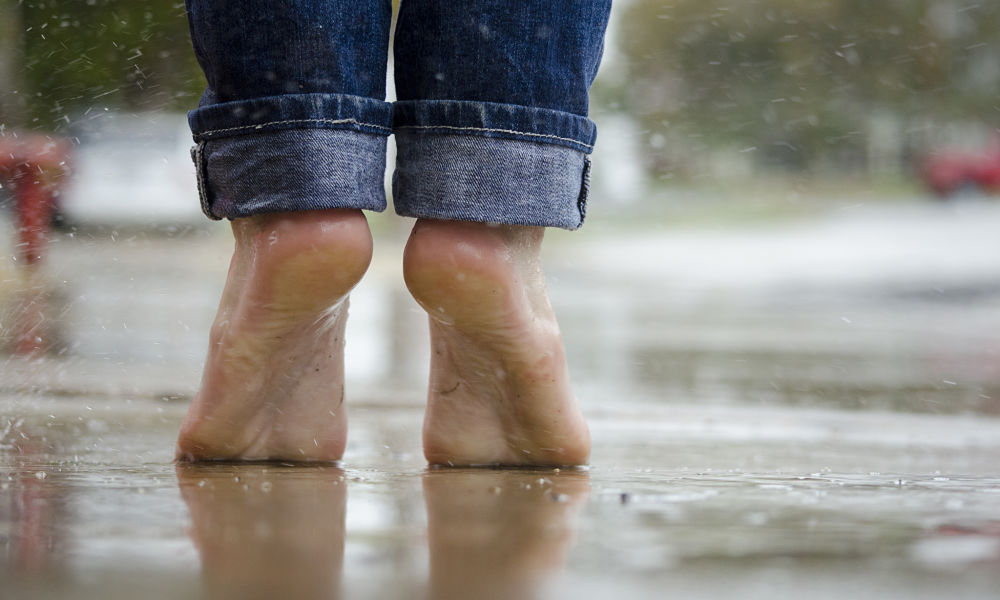
Did you know that certain sections of your feet are linked to different parts of your body? The acupoints are the specific spots on your feet that are connected to different parts of your body. By utilizing the acupoints, you apply pressure to sections of your feet, which helps to relieve pain and maintain good health. The flow of energy known as qi connects the fifteen sections of our feet to the different body parts. In order to thoroughly utilize the information of reflexology, you should first understand the different foot pressure points. Each pressure point is affiliated with a different body part. If you are interested in learning more about foot pressure points and reflexology, follow the tips and information below.
Tai Chong (LV 3)
Use this foot pressure point if you are stressed, angry, anxious, irritated, have a headache, or are experiencing menstrual pain. In order to locatethe pressure point, press your finger into the indented spot found between the big toe and second toe. Once you place your finger around the area where your tendons meet, apply pressure and massage.
Yong Quan (KD 1)
If you are experiencing palpitations, insomnia, poor memory, hot flashes, night sweats, or anxiety, use this foot pressure point. Locate the pressure point by finding the depression below the joint of your big toe. Transition your thumb so that it presses against the area found between your big toe and second toe. Massage the area for a few minutes to receive the best results.
Da Dun (LV 1)
This pressure point is great if you want to relieve dizziness, stomachaches, and hernias. The pressure point is found on the inside of your big toe. Apply pressure to the area located about one inch below the toenail corner.
Tai Bai
Are you experiencing vomiting or diarrhea? Try locating this foot pressure point, especially because it is good for relieving stomachaches, dysentery, and abdominal distension. Locate the pressure point by pressing the side of your foot until you find the depression near the ball of your foot. Towards the middle side near the ball of your foot, find where the pressure is the strongest.
Tai Xi
Use this pressure point if you have asthma, toothaches, bronchitis, a sore throat, arthritis, or kidney disease. The pressure point is found in the indention between your Achilles’ tendon and the top of your ankle. More specifically, it is between your Achilles’ and the top of the medial malleolus (the inner bump) of your ankle. Firmly press on the pressure point.
Shen Mai
This pressure point helps to improve patience and reduce anxiety and fear. Also, it can help ease and prevent colds. The pressure point is easily found on the lateral malleolus or the outer bump found on your ankle.
Qiu Xu
If you are experiencing moodiness, try using this pressure point to stabilize your mood. Additionally, the pressure point helps with coping skills and relieves mental stress. It is found about one inch below the lateral malleolus or the outer bump on your ankle.
Kun Lun
This pressure point has several benefits when applied with enough pressure. It helps relieve headaches, eye diseases, high blood pressure, lumbar pain, intestinal issues, and diarrhea. The pressure point is found in the indention on top of the highest area of the lateral malleolus (outer bump on the ankle) and the Achilles’ tendon.
Xing Jian
Used to help with leg cramps, sinusitis, eye diseases, and liver disease, this pressure point is located between your first and second toe. Find the location by applying pressure where the thick part of your skin meets between the two toes.
Li Nei Ting
Found on the underside of your foot, this pressure point helps to relieve food poisoning and urinary tract infections. This pressure point is more easily accessible because when pressure is applied to the area it creates soreness. More specifically, the section is found between your second and third toes under your foot.
Xia Li
This pressure point specifically helps with diarrhea and is located about one inch below the adjoining web of your big toe and second toe.
Zu Lin Qi
Use this pressure point if you are experiencing muscle cramps, psychoneurosis, eye conditions, or apoplexy. The pressure point is found on the exterior side of your foot about one-third of the way down.
Gao Ya Xue Dian
Specifically for people who have high blood pressure, this pressure point is located on your big toe. It is at the center point of your big toe and is more specifically found on the top end of the middle joint.
Di Er Li Dui
Have you tried several methods to get rid of hiccups? If other methods have not worked for you, try applying pressure to this pressure point to help get rid of hiccups. Also, this pressure point helps with relieving nausea and appetite. The pressure point is found on the upper side of your second toe below the toenail.
Di San Li Dui
If you are experiencing heartburn or excessive burping, try using this pressure point, which is found below the toenail of your middle toe.
Foot Pressure Points Concluded
There are fifteen foot pressure points that are connected with different parts of your body and have different benefits. Use the foot reflexology technique to pinpoint each foot pressure point in order to make the most out of each benefit.
How to Burn Sage and Cleanse Your Aura
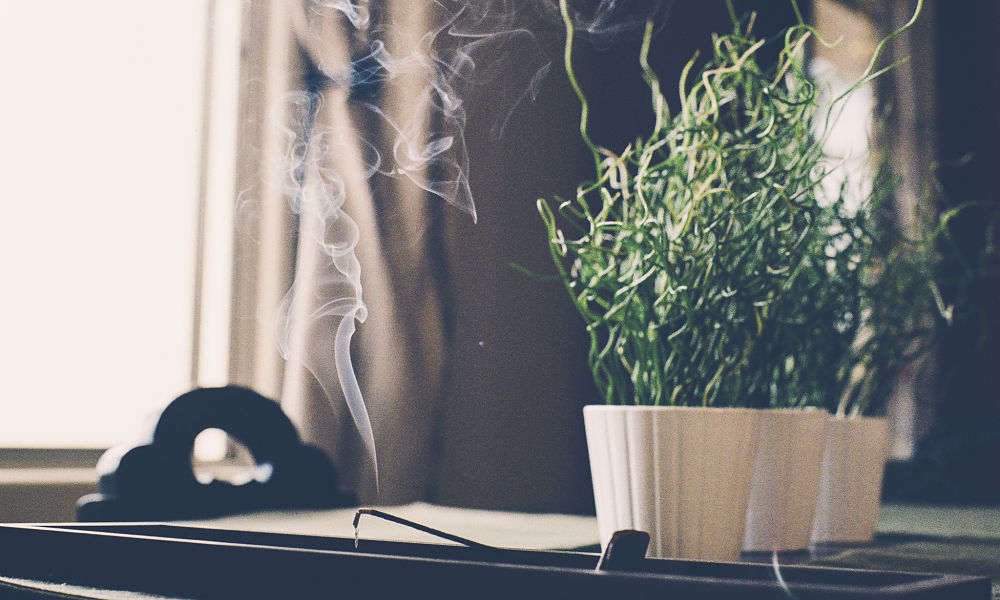
Burning sage is also considered as smudging. It is usually used for purification because the smoke is very cleansing. Many people use sage in their homes or at their yoga studio because it helps get rid of negative energy. Smudging is also more commonly used in healing rituals and spiritual ceremonies. Anyone can learn how to burn sage because it easily and accessible.
Historically, the practice of smudging comes from Native Americans. According to the theory surrounding smudging, the smoke that comes from burning sage latches onto negative energy. Then, the smoke cleanses the negative energy as it is cleared away. The negative energy can then become positive energy. If you are interested in conducting the smudging practice and want to cleanse your space, examine the information and tips found below.
Choosing Your Herb
Before you get started, make sure you know what specific herb you need. In order to meet your individual needs, choose what you enjoy most. Although there are several herbs that may have different affects, find what is right for you individually. In fact, it really does not matter which herb you choose. It is important to pick and choose the herb that you are most comfortable with.
White Sage
More commonly known for smudging, white sage is great to start off with. The white broad leaf sage helps with spiritual cleansing. It is usually accessed in bundles and is found online, at some grocery stores, or at holistic wellness shops. White sage has strong aromatic properties, which is why it is more commonly used. Also, it can be used for four-element cleansing purposes.
Burning white sage is great if you are trying to obtain a peaceful and calming state. White sage is a great way to start smudging. It is especially beneficial for divination, meditation, purification, and as previously mentioned, cleansing.
Other Herbs
There are several other options if you are looking for a different kind of herb. Lavender, pine, and cedar are also great to try at first. Feel free to experiment with what works best for you individually. If you personally prefer one kind of herb to another, follow what makes you most comfortable. The smudging experience is meant as a way to bring you peace and cleanse your space.
You can also experiment with combining certain herbs together. It is quite common to find sage and cedar smudge sticks. If you are interested in other options, there are several other herbs you can try.
Here is a list of other popular herbs, grass, and resin:
- Desert Sage
- Pinon Resin
- Sweet Grass
- Copal Resin
- Sacred Tobacco
Choosing Your Burner
Finding the place and method for how you are going to burn sage is important because it helps set the process. If you are smudging with loose sage or a stick, you need to have the appropriate tools and setting. There are several options for choosing the right kind of burner for you, such as using age pots or abalone shells. However, if you do not want to use age pots or abalone shells, there are other options.
You do not need to use something like age pots or abalone shells because there are simpler options. If you prefer simpler, try using an ashtray or a nice, small plate. Make sure that the ashtray or plate you are using for smudging is clean. Try using sea-salts to completely wash and clean the materials.
Steps for Burning Sage
As soon as you have all of the essential materials ready, here are some steps to follow for how to burn sage and cleanse your aura. Good luck!
Step 1: Set an Intention
Before you start burning sage, make your thoughts apparent. Set an intention and keep it in mind as you continue through the steps. Why are you burning sage? What is your reason for smudging?
Step 2: Choose Your Sage
Choose the kind of sage or other herb you prefer. Follow the tips and information previously mentioned for further detail.
Step 3: Choose Your Burner
Make sure to choose the right kind of burner for your sage. Loose sage requires some type of plate or bowl. Observe the previous tips and information for picking a burner that is right for you.
Step 4: Burn the Sage
Burn the sage. Then, blow out the flame so there is only smoke left.
Step 5: Let it Burn Out
Once you have finished, let the sage burn out. Get what you need, and if you are unsure, let the sage burn for a smaller amount of time.
Follow the suggested steps and information to help you more successfully burn sage and cleanse your aura.
What are the Symptoms of a Yeast Infection?
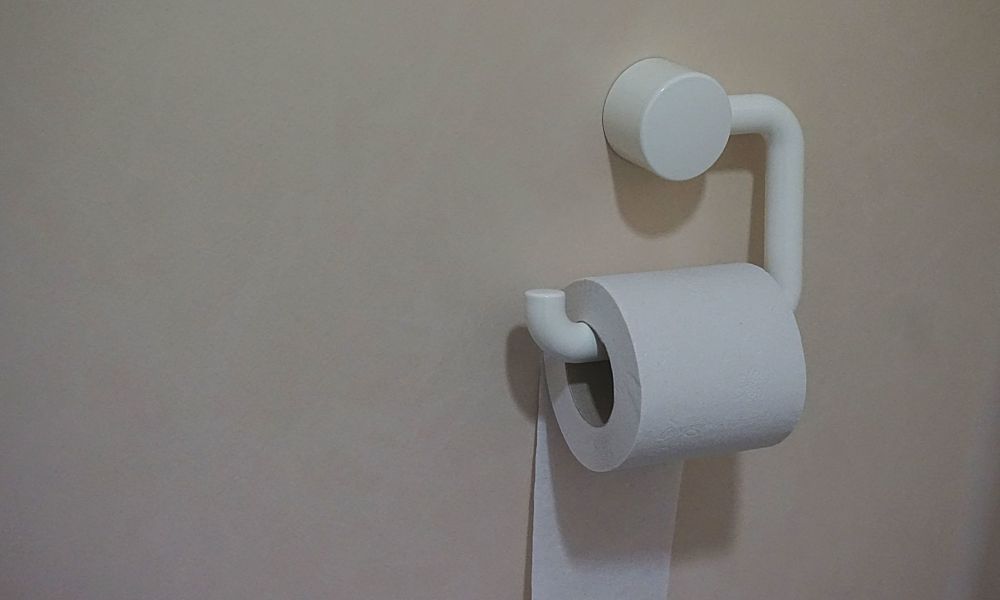
Have you experienced a vaginal yeast infection? If you have, you know how uncomfortable and annoying it can be. Vaginal yeast infections are pretty common. In fact, according to Healthline, at least 3 out of 4 women will have a yeast infection at some point within their lives. Vaginal yeast infections is caused by the fungus Candida albicans, which is why it is also known as candidiasis.
When the bacteria and yeast changes or becomes imbalanced inside the vagina the yeast cells can multiply, causing the symptoms of a yeast infection. It is good to have bacteria and some yeast cells because that means you have a healthy vagina. However, when there is too many yeast cells there is an imbalance, which leads to a yeast infection. Listed below are some information and symptoms of a yeast infection.
What are some common symptoms of a yeast infection?
There are several symptoms of a yeast infection, such as itching or discomfort. Here is a list of some common symptoms of a yeast infection:
- Vaginal itching and/or irritation
- Soreness
- Redness
- Rash
- Pain during sex
- Feel a burning sensation, especially when urinating or during sex
- Swelling around the vagina
Vaginal yeast infections can be painful, especially when they cause itchiness or soreness in the vagina. In addition to the symptoms listed above, you may also experience vaginal discharge. The consistency of the discharge can vary, such as resembling cottage cheese or may be more watery. It tends to have no odor and has a whitish gray and clumpy appearance. Symptoms of a vaginal yeast infection usually occur before your menstrual period.
The common symptoms listed above are mild to moderate. However, the symptoms can lead to a more complicated vaginal yeast infection, such as the following:
- Extensive redness and swelling
- Itching that leads to tears or sores
- Having more than four yeast infections a year
- Experiencing further problems because you are pregnant or have uncontrolled diabetes
What are some causes of a yeast infection?
Factors that may increase your risk of having a yeast infection include the following:
Sexual Activity
With an increased amount of sexual activity, you are increasing your risk of developing a yeast infection. Yeast infections are not sexually transmitted infections, but by being sexually active, the candida fungus is spread by sexual contact.
Antibiotics
You are more likely to get a yeast infection if you take antiobiotics. Because broad-spectrum antibiotics kill bacteria, they can also kill the healthy bacteria found in your vagina. With less bacteria in your vagina, there becomes an imbalance because it causes an overgrowth of yeast cells.
Impaired Immune System
If you have lowered immunity, you are more likely to develop a yeast infection. Lowered immunity can be caused from corticosteroid therapy or an HIV infection.
Estrogen
Increased levels of estrogen can lead to developing a yeast infection. If you are pregnant or take high-dose estrogen birth control pills, you are more likely to develop a yeast infection.
Uncontrolled Diabetes
Women who have uncontrolled diabetes are more likely to develop a yeast infection than those who have well-controlled diabetes. Diabetes and poorly controlled blood sugar levels increase the likelihood that you will have a yeast infection.
What can you do if you have a yeast infection?
There are several things you can do to help prevent getting a vaginal yeast infection. Also, there are things you can do if you have a yeast infection.
Before you have a yeast infection…
You can prevent a yeast infection by doing the following:
- Keep your vagina clean and avoid using soap that is heavily scented. Make sure to rinse well.
- Make sure to wipe from the front to the back when you go to the bathroom.
- Avoid tight-fitting clothing.
- Wear underwear that is not too tight and feels comfortable. Cotton underwear is always a great choice.
- Keep your genital area dry and keep it from becoming too warm or moist.
- Change your pads or tampons regularly.
During a yeast infection…
If you have a yeast infection, you can do the following to help:
- Contact your doctor if you are concerned or have questions.
- Do some research and figure out if your symptoms match the signs of a yeast infection.
- Make a list of the symptoms you are experiencing. Include how long the symptoms last.
Take Control
There are several symptoms of a yeast infection, such as itchiness, redness, and irritation. If you are experiencing discomfort or pain, take control and contact a doctor you trust. By asking for help, you may find a quicker solution to help prevent future vaginal yeast infections.
The Health Benefits of Reishi Mushrooms
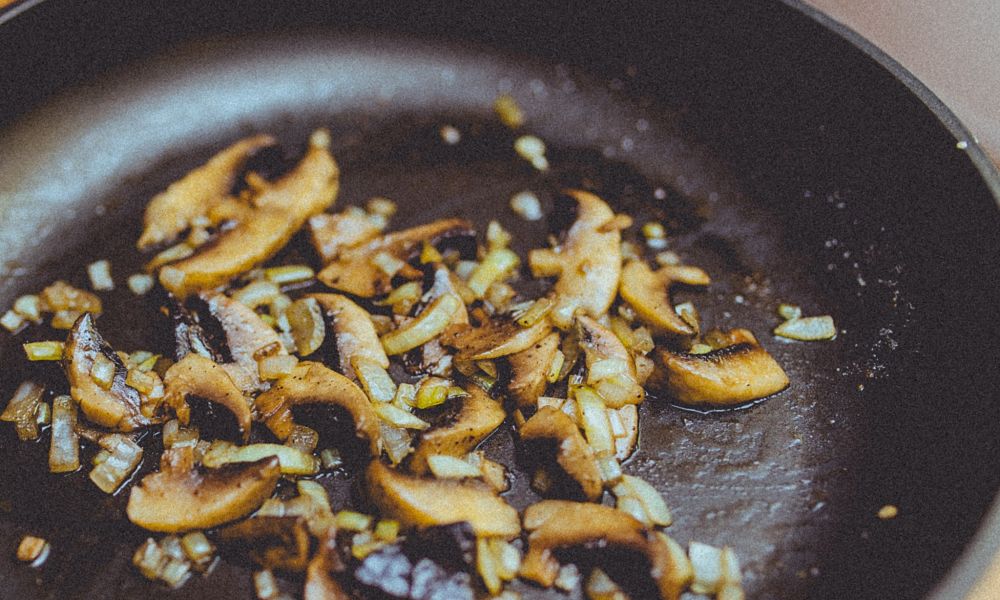
Did you know there are several health benefits of reishi mushrooms? The reishi mushroom is also known as “Lingzhi” in Chinese and many consider it to be the “mushroom of immortality.” Reishi mushrooms are super healthy for you, and you should definitely think about incorporating it into your diet.
Although you may not like the taste or texture of mushrooms, reishi mushrooms can be consumed in several ways, including teas and some protein powder blends. In fact, there are several varieties of the reishi mushroom and it tends to have a bitter and woody taste. The reishi mushroom has been revered for thousands of years and is becoming more popular in Western cultures. Because it is super healthy, the reishi mushroom is worth trying.
What exactly are the health benefits of reishi mushrooms? Listed below are some of the health benefits of reishi mushrooms.
Cancer Prevention Properties
There are many active studies conducted on cancer, one being on the anti-cancer properties of the reishi mushroom. Reishi mushrooms have been shown to prevent the development of cancers. In addition to preventing the development of cancers, reishi mushrooms have also shown to eliminate existing cancer cells.
The scientific studies and research focusing on the reishi mushroom have also provided evidence of triterpenoids, which has the ability to reduce the metastasis of cancerous cells. The triterpenoids found in reishi mushrooms also can help prevent tumor growth. Cancerous cells found within the body can be neutralized due to the active ingredients of reishi mushrooms. Because reishi mushrooms have anti-cancer properties, it is highly recommended to utilize the mushrooms and incorporate them into your diet.
Non-Toxic
Reishi mushrooms are non-toxic and can detoxify the body. The reishi mushroom helps to not only detoxify the body but it also helps to restore the body to its natural state. By supporting essential organs like the liver, the reishi mushroom supports the body. It detoxifies the body by decreasing the level of toxins found in our body, especially found in the liver.
The liver is essential for your overall health and the reishi mushroom helps create a quicker regeneration of healthy liver cells. Similar to the previous health benefit, the triterpenoids found in the reishi mushroom not only helps with anti-cancer prevention, it also supports the liver. The triterpenoids in the reishi mushroom supports the liver by helping the release of free radicals and the regeneration of liver cells.
Anti-Aging
There is a reason why the reishi mushroom is considered as the “mushroom of immortality.” The reighi mushroom has anti-aging and life span-extending properties. Due to the polysaccharides found in reishi mushrooms, these molecules help provide anti-aging properties. The polysaccharides have anti-aging properties by boosting the immune system and helping prevent abnormal blood vessel formations.
The reishi mushroom is also known as the “king of herbs” and the “10,000-year old mushroom” because of how popular it has been for thousands of years. Highly praised and admired in herbal medicine, the reishi mushroom has long been used for its life span-expanding effects.
Neurological Support
Reishi mushrooms have been used to help treat neurodegenerative disorders like Alzheimer’s and Huntington’s disease because of their neuroprotective properties. Neurological diseases and cognitive disorders can be painful and difficult to deal with. The reishi mushroom can provide some neurological support by helping with the production of nerve growth factor, which is a protein for healthy cognitive function. When taking the extracts in reishi mushrooms, you are helping stimulate your cognitive activity.
Immune System Support
The reishi mushroom can act as an immune modulator by supporting and helping regulate the immune system. As mentioned earlier, the reishi mushroom is non-toxic and helps to detoxify the body. Reishi mushrooms also have beta-glucans, which are powerful immune system boosters. Beta-glucans help to protect yourself from several diseases. The more beta-glucans, the better. Increasing the amount of beta-glucans in your body helps support your immune system. Additionally, the more beta-glucans that are in your body, the more likely you are to reduce signs of aging. So, not only does the beta-glucans found in reishi mushrooms provide immune system support, but they also help provide anti-aging properties.
Why choose reishi mushrooms?
Evidently, there are several reasons to choose reishi mushrooms. The health benefits of consuming reishi mushrooms include: cancer prevention properties, non-toxic, anti-aging, neurological support, and immune system support. Reishi mushrooms are a great and healthy option, but there may be some side effects. Side effects range from headaches to nosebleeds to a dry mouth. Although these side effects can range and may seem to be insignificant, speak with a trusted professional if you experience any serious reactions.
Into the World of CrossFit

CrossFit is a popular fitness regimen and has attracted much attention. It involves a transformation of not only your body, but also your lifestyle. If you are interested in participating in the CrossFit program, here are some tips and information.
What exactly is CrossFit? In this article we will examine what CrossFit is defined as and who can benefit most from participating in the program. It will take commitment and dedication if you are seriously considering CrossFit, such as with any other influential activity in your life. CrossFit takes an unorthodox approach towards fitness because it involves a sort of randomness as it requires you to jump from one hard thing to the next.
What is CrossFit?
So, what is CrossFit exactly? According to the original CrossFit site, CrossFit was developed by Greg Glassman and is intended to improve fitness and health. It involves varied functional movements in which aspects like gymnastics, weightlifting, running, and rowing are performed with great intensity.
Although CrossFit has many benefits and may be perfect for you, there can be some risk. Be careful of injury when you participate in the CrossFit program. Injury like Rhabdomyolysis can occur, especially when you overwork your muscles enough to make the fibers break down. In order to reduce injury risk, make sure to get the correct and right training. Make sure to get coached by someone who understands the subjects he or she teaches. Another way to reduce injury risk is to listen to your body. Only you know your body and what your body needs. Over exhaustion and overworking your body to a point that is dangerous to your health is not what CrossFit is about. CrossFit attempts to take an approach that is meant to challenge you while also create a supportive atmosphere.
Who can participate in CrossFit?
Because CrossFit creates a supportive and inclusive environment almost anyone can participate in the CrossFit program. However, be aware that the CrossFit program is intended for individuals who are willing to be committed and dedicated. No matter what your level of experience is, the program applies challenging and intense fitness activities in order to train the world’s fittest individuals. People like emergency workers and Olympic athletes use CrossFit to further challenge themselves.
CrossFit Men
There are several noteworthy and popular names in CrossFit. If you are looking for inspiration, there are several CrossFit participants who continually challenge and push themselves. Listed below are some men who have participated in the CrossFit Games.
Khan Porter
Instead of using a coach, Khan Porter has actually been known to train himself. He is an Australian with a popular hashtag: #khantstopwontstop.
Stephen Angove
Now 63 years old, Stephen Angove is a three-time CrossFit Games masters athlete and is a major competitor in the Men’s Masters division. He first started his CrossFit journey in 2013 and placed in second in his age group at the 2014 CrossFit Games. His prior athletic experience before CrossFit included recreational sports.
Lucas Parker
Also known as Lucas “Teen Wolf” Parker, Parker is more commonly recognized for his red beard, though he has recently shaved for charity. Before he began CrossFit in 2011 Lucas Parker was a rugby player. He is from Victoria, British Columbia and is a six-time individual CrossFit Games veteran.
Alex Anderson
You may recognize the name Alex Anderson because his father, Steve Anderson, won the master’s division of the CrossFit Games in 2011. Once Steve Anderson started doing CrossFit, his family shortly followed, including Alex Anderson. From Tennessee, Alex is a two-time individual CrossFit Games athlete.
Bill Grundler
As someone who is passionate and loves CrossFit, Bill Grundler demonstrates how CrossFit can change both your body and also your life. He was introduced to CrossFit in 2001 in Santa Cruz. As the captain of the Pismo Beach Fire Department, he wanted to start using CrossFit as a way to train his fellow fire fighters. Through training and experience in opening his own CrossFit facility, Bill Grundler has competed in both a CrossFit Regional Team and as an individual competitor.
Start CrossFit Today
If CrossFit sounds like the perfect option for you, start participating today. Of course it will take time and commitment, but the CrossFit program is an excellent opportunity. Try to challenge yourself with the fitness program and see if you enjoy it. The CrossFit program maintains an intense and varied approach to fitness, which is why it is so unique. CrossFit is for anyone willing to challenge him or herself and creates a supportive environment. Start your CrossFit journey today!
Basic Yoga Poses
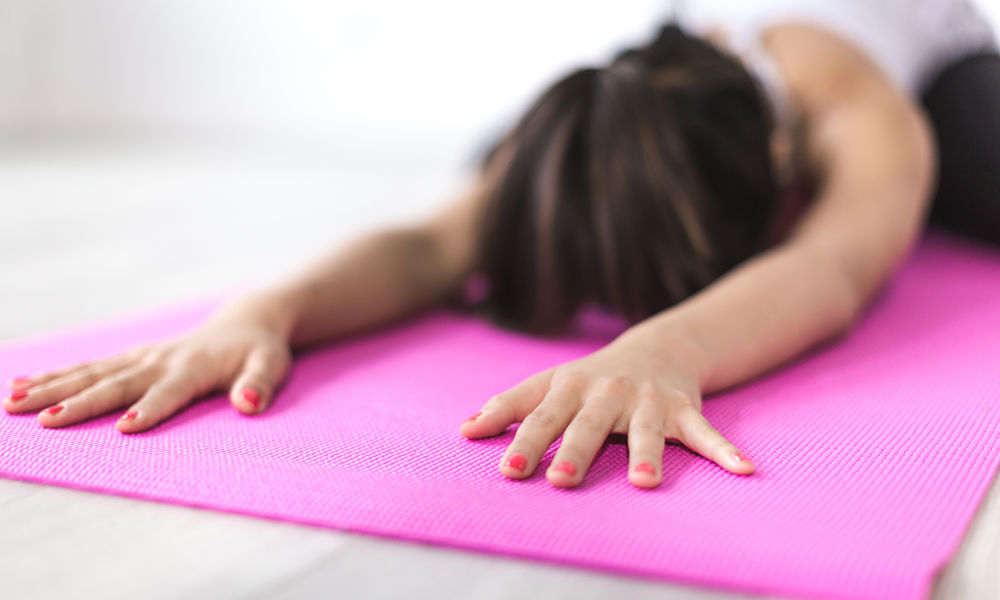
Are you interested in practicing yoga? Listed below are some basic yoga poses to help familiarize you with yoga. Learn basic yoga poses at any stage of your journey in order to more easily learn harder and more complex poses.
Similar to another article that I previously wrote and covers six beginning yoga poses, this article will go over some basic yoga poses. There are several poses in yoga, which is why it is important to learn the foundations of basic poses. If you are interested in learning more basic yoga poses, follow the suggested poses found below.
Warrior Pose
Description: Many people are familiar with the warrior pose, but there are actually two forms of the warrior pose. The Sanskrit name for the warrior pose is Virabhadrasana and is known for building strength. The warrior pose is especially good for your legs and ankles because it provides a deep stretch.
Warrior 1
How to: Warrior 1 is a pose that creates a gentle backbend and opens up the front of the body while strengthening the legs and core. From a standing position, take a giant step back with your left leg. Then, come into a lunge position and turn your back left heel so it touches the floor. Angle your left toes forward at about 75 degrees. Focus on your upper body by pressing your palms straight above your head and lifting your chest. Make sure to breathe in and out slowly as you feel the deep stretch. After you have held the position for a few breaths, step forward and switch legs.
Warrior 2
How to: Similar to the warrior 1 position, warrior 2 involves a lunge-like position. First, start in standing position. Next, take a step back with your left leg. Your feet need to be at least one leg’s-length apart. Make sure your front right leg is bent so that your knee is directly over your right ankle. Keep the back left toes angled at 45 degrees. Focusing on your upper body, stretch out your arms and place them straight from your sides. With your right hand stretched out in front, direct your soft gaze towards your fingertips. Stay in the warrior 2 position for at least a few breaths. When you have completed the position, straighten your front right leg and turn your feet to the other side and repeat the steps previously described.
Bridge Pose
Description: The bridge pose stretches the front body while strengthening the back body. This position acts as a great basic pose for beginners because the back bend is not too strenuous. In fact, the bridge pose is quite comfortable for some.
How to: Lie down on your back and place your feet about hip width apart. With your legs bent, press your feet into the floor as you slowly begin to lift your butt off of the mat and ground. Then, interlace your fingers and hands together under your raised lower back. In order to open up your chest even more, press your hands down into the floor. Stay grounded through your feet and hands, and try not to let your shoulders tighten. Hold the position for at least eight breaths before slowly lowering down. Repeat the steps at least two more times.
Plank
Description: Although it may sound easy, the plank position helps build strength and can be challenging for some. The entire body stays engaged as you balance on your on your hands and toes. The plank position allows you to also practice focusing on your breath while staying in a challenging pose. If you are trying to strengthen your abdominals, this pose is perfect for you.
How to: With your knees and hands on the ground, slowly transition into the plank position by tucking your toes under and extending your legs straight back. Slide your heels back until your back creates a straight line. Press into your hands and keep your gaze downward so as to not hurt the neck. Make sure to keep your shoulders away from your neck and ears. If your wrists begin to hurt, either lower your knees down or place your elbows on the floor. Hold the plank position for a few breaths before lowering your body completely down.
Other Basic Yoga Poses
There are several other basic yoga poses like triangle and the seated forward bend. It will take time and practice before you conquer more complex yoga poses. The best way to approach any yoga pose is to first learn the basics and familiarize yourself with beginning yoga poses.
What is Leaky Gut?

Are you suffering from a leaky gut? How do you know if you have a leaky gut? If you are experiencing symptoms of a leaky gut, here is some information to help you understand leaky gut.
There are several symptoms that indicate whether or not you have a leaky gut. Although it may feel hopeless, there are certain steps you can take to heal. First, you will need to change your dietary habits so that there is not any more damage on your gut. Next, if you want a quicker and effective recovery, try taking supplements. If you are unsure whether or not you have leaky gut, here are some common symptoms.
Symptoms
Do you have a leaky gut? How do you know if you do or do not have a leaky gut? Leaky gut symptoms can help you pinpoint whether or not you have a leaky gut. There are a few signs that indicate you have a leaky gut. If you feel uncertain or have more questions, contact your doctor.
Mood Issues
Many neurocognitive disorders can be related to a leaky gut. Mood issues and autism, for example, may be leaky gut symptoms.
Autoimmune Disease
Gluten has been known to trigger some of the symptoms associated with a leaky gut. In fact, a leaky gut, gluten intolerance, candida overgrowth, and parasites all share the common culprit: the gut. When the gut is affected, it can lead to a number of problems and diseases. Autoimmune disease can be connected to a leaky gut due to the protein “zonulin.”
Sensitive to Certain Foods
Allergies, asthma, or food sensitivities can be signs that you have a leaky gut. If you are sensitive to certain foods like gluten or dairy, you may have a leaky gut.
Skin Issues
Acne, rosacea, and eczema are skin issues that can be indicators of a leaky gut. The gut and skin have long known to be connected. If your skin seems to be unbalanced, try skipping the creams and instead focus on healing your gut.
Digestive Issues
There are certain digestive issues like bloating and diarrhea that may indicate you have a leaky gut. Other digestive issues include gas or irritable bowel syndrome (IBS).
Other Symptoms
In addition to the leaky gut symptoms listed above, there are other signs you should take into consideration. Chronic fatigue, fibromyalgia, and hormonal imbalances like PMS or PCOS are just a few other symptoms associated to a leaky gut.
Treatment
If you believe you have a leaky gut, it is always best to contact your doctor. However, there are several ways to treat a leaky gut. In this article, we will cover a few supplements that can help heal a leaky gut.
Digestive Enzymes
Take digestive enzymes with your meals in order for them to work more effectively. Digestive enzymes help with the breakdown and absorption of macronutrients and work with the body in order to support intestinal repair.
Probiotics
Not all bacteria is bad for us, especially because our gut needs the good and friendly kind of bacteria. The good bacteria helps break down and digest our food properly. The good bacteria is very important for your gut because it can also keep your bad gut bacteria in check. However, eating poorly, taking antibiotics, and other activities can deplete the friendly bacteria. In order to bring balance to your gut, try taking probiotics.
Marshmallow Root
Usually used for respiratory or digestive relief, marshmallow root is another optional supplement. Marshmallow root helps by providing relief to inflammation in the stomach lining and can help treat diarrhea and constipation. By protecting the lining on the digestive tract, marshmallow root helps provide relief.
Slippery Elm
Very effective and helpful, slippery elm is a great way to approach healing the gut. Slippery elm contains antioxidants to help relieve inflammatory bowel symptoms and aid the digestive system. Similar to marshmallow root, slippery elm has a high mucilage content, which stimulates nerve endings in the body’s intestinal tract.
Conclusion
Although there are several signs and indicators of a leaky gut, it is still not completely researched. Physicians do not have enough evidence for what causes and how to treat a leaky gut. Because there is still a bit of a gray area when it comes to a leaky gut, you should communicate with your doctor if you feel uncertain. The leaky gut symptoms listed above are simply suggested signs to observe.
If the suggested treatments are not what you would were looking for, try changing your diet. A poor diet may be the only reason you are experiencing gut trouble.
Is Buckwheat Gluten-Free?
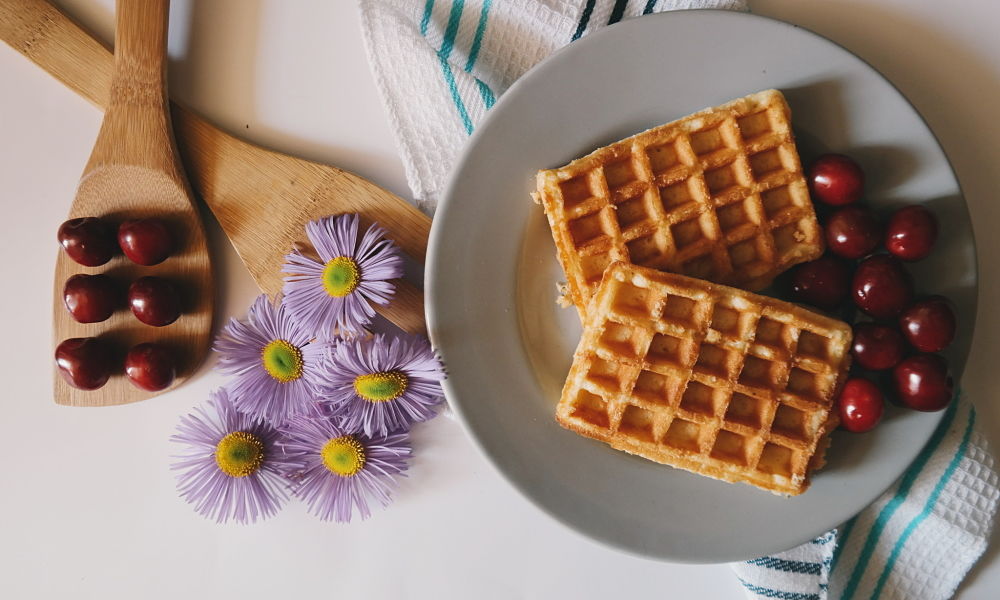
Are you trying to maintain a gluten-free diet? If you are, try incorporating buckwheat into your diet. Buckwheat can be gluten-free and is a great option for those of you who are looking for food that does not contain gluten.
Buckwheat is also known by the name “kasha.” Kasha is simply buckwheat when it is toasted and becomes a darker red and brown color. With a nice toasted nut scent, kasha is a great ingredient for incorporating into other recipes. On the other hand, raw buckwheat tends to be a light brown or green color and do not necessarily have a certain smell. Buckwheat may also be known as beech wheat or Saracen corn.
There are many advantages from eating buckwheat, including the fact that it is gluten-free. It may be difficult or challenging at times to make sure that the food you are consuming is completely gluten-free. Therefore, you should try incorporating more buckwheat into your diet because it is not only gluten-free but buckwheat flour is also wheat-free. Listed below are some benefits of consuming buckwheat as a gluten-free option.
Works as a Good Substitute Option
Although there is the word “wheat” in buckwheat, buckwheat does not contain wheat and is more related to rhubarb. Buckwheat is more of a seed than a grain and is a great substitute option when cooking. Other categories that buckwheat is related to include sorrel and knotweed.
Do you miss rice or pasta? Buckwheat flour acts as a great substitute for foods like rice and pasta because it is gluten-free but also has a nice taste. Use buckwheat groats as a hot breakfast cereal or find a recipe that uses buckwheat flour. Buckwheat flour is actually made by grinding the small seeds of the plant until it resembles the texture of flour. Although it may have a strong and nutty taste, it has a wonderful flavor when incorporated into other recipes and dishes.
Fiber
Buckwheat is an excellent source of soluble dietary fiber. Your diet should include 25 to 35 grams of fiber every day. With about 17 grams of fiber in one cup of cooked buckwheat groats, buckwheat is a great option for getting the necessary amounts of fiber in your diet without having to worry about gluten.
Fiber helps support healthy digestion and lowers blood cholesterol levels. Because fiber is so important and necessary for your health, buckwheat is very beneficial. Maintaining a gluten-free diet does not mean you necessarily have to live an unhealthy life. Gluten-free options like buckwheat make it possible for you to maintain a healthy diet and lifestyle.
Protein
As well as fiber, buckwheat contains high-quality plant proteins. If you are looking for a food source with a great amount of protein, try incorporating buckwheat into your diet. With a balanced combination of both essential and non-essential amino acids, buckwheat is considered to have protein that is called “biologically available protein.” Amino acids are the building blocks of protein, which means that buckwheat is a healthy and natural source of protein.
Nutrients
High in essential nutrients, minerals, and vitamins, buckwheat is a great option for keeping a healthy diet that does not include gluten. Buckwheat is a great source of specifically B vitamins, such as vitamin B6, pantothenic acid, folate, thiamin, niacin, and choline. It is also rich in trace minerals like manganese, magnesium, and copper. Additionally, buckwheat contains rich amounts of phosphorus, potassium, iron, lysine, and calcium.
If you are looking for a food option that has many health benefits, you should consider eating more buckwheat. Not only does it have a high amount of essential nutrients, but it also has several other benefits like containing high amounts of minerals and vitamins.
Antioxidants
In addition to being to a rich source of nutrients, minerals, and vitamins, buckwheat is also a rich source of antioxidants. Buckwheat has a rich source of rutin and vitamin E, which are powerful antioxidants. Antioxidants help to prevent cell damage and are very beneficial for your overall health. Because buckwheat acts a gluten-free option and also has a rich amount of antioxidants, you should definitely consider incorporating buckwheat into your diet.
Buckwheat is Beneficial
Overall, there are several reasons to consume buckwheat, especially because it acts as a healthy gluten-free option with many dietary benefits. By consuming gluten-free and healthy options like buckwheat, you can more easily maintain a healthy diet and lifestyle. Buckwheat is very beneficial for your health and if you are considering eating more buckwheat, you should consume it at least twice a week.
What Does A Period Look Like?

There is not a “normal” way that a period should be perceived because each individual woman is different and has different cycles. Some women may experience longer cycles and others may experience shorter cycles. It depends on the individual. There is not a definitive way to answer the question, “What does a period look like?” because everyone has different experiences. However, there is a general way to look at a period by observing the basics of periods.
In fact, your period may be telling you a lot about your overall health. Qualities like the length or color of your period are indicators of your health. By observing what your individual period looks like, you can also analyze what your period is telling you about your health. Listed below are descriptions of several different periods in order to help you gauge what your period is trying to tell you about your overall health.
Bright Red
If your period is a bright red color resembling a cranberry or garnet, then you show signs of good health. In addition to a bright and healthy red color, if your period occurs regularly, you are more likely to be healthy. Menstrual cycles that occur regularly and are spaced out between 28 to 35 days indicate good health. Periods tend to last less than a week, ideally between four and six days, and bleeding should be somewhere in the middle between heavy and light.
Brown
Having a dark brownish period indicates that you may be releasing older pieces of uterine lining and blood from your body. Although it sounds drastic, it is actually quite normal and many women may experience this kind of period. The dark brown color usually occurs at the beginning or end of your period. Different women will shed her uterine lining at different rates and is completely safe.
Pink
Is your period a pinkish color? Is it on the lighter side? You may have low estrogen levels. Low estrogen levels are indicated by the pink color and the light flow of your period. If you notice a change in the color or flow of your period, you may have low estrogen levels. Lower estrogen levels can be caused by excessive exercise and activity. In fact, it is not uncommon for women who are professional athletes to stop ovulating altogether. Although it sounds tempting to stop having a period, low estrogen levels can lead to osteoporosis.
Besides lower estrogen levels, the pink color of your period may also indicate other health issues. The pink color may indicate poor nutrition, perimenopause, or polycystic ovary syndrome (PCOS).
Watery
When your period looks watery or your bleeding appears to have a little lighter flow, you may have a nutritional deficiency. Thinned out or watery bleeding during your period may be indicative of a nutritional deficiency, such as anemia. Make sure to contact your doctor if you have any questions or concerns about your overall health.
Another reason why your period may appear watery is that you have low levels of estrogen. As mentioned previously, low estrogen levels can have a significant impact on the color and flow of your period. If you notice that you have vaginal dryness and sporadic periods as well as have a watery-looking color period, you may have low levels of estrogen.
Dark Red
A period that is dark red with large clots and resembles a thick jam-like color demonstrates signs for low levels of progesterone and high levels of estrogen. Clots that are larger than the size of a quarter tend to indicate a hormonal imbalance. Try eating less dairy, sugar, and soy if you are experiencing a period similar to a dark red with large clots.
Another possible explanation could be that you have uterine fibroids, which can be painful. If you believe that uterine fibroids may be the culprit (or are unsure and simply want someone to help), contact your doctor.
Gray and Red
A mixture of the colors gray and red may indicate an infection. Usually, the gray and red mixture of colors will be accompanied by a foul stench, which can indicate an STD or STI. The best solution is to see your doctor in order to find the right treatment. If you experience discomfort and notice your period is a mixture of gray and red, contact your doctor as soon as possible.
To sum it all up…
Not every period looks the same. What periods look like greatly depends on your overall health. For example, an iron deficiency may mean that you are experiencing a heavier flow during your period. If you notice that your period is different or the cycle has changed dramatically, contact your doctor.
